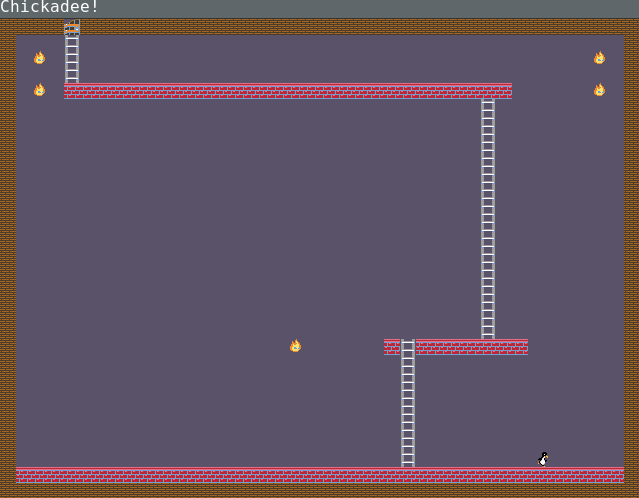| assets | ||
| game | ||
| scripts | ||
| .gitignore | ||
| bloatrunner.tiled-project | ||
| bloatrunner.tiled-session | ||
| bootstrap.sh | ||
| bundle.scm | ||
| configure.ac | ||
| guix.scm | ||
| LICENSE | ||
| Makefile.am | ||
| pre-inst-env.in | ||
| README.md | ||
Bloatrunner
A Lode Runner clone where you have to manage your waistline bloat.
As a Bloatrunner you have to collect keys to open the gate at the top of the level. However running costs energy, and as in any endurance event energy management and correct fueling is of utmost importance. By running your glycogen reserves in your muscles will deplete and need to be replenished either from food or from fat reserves.
Your running kit has some small pockets to store a few gels or packets of gummi bears for fast energy replenishment. You will find replacements from time to time. In addition there will be other food items distributed over the levels.
However as in real life it seems that most food items are unhealthy and for some reason irresistable so they are consumed immediately. Similarly for some reason it seems that food turns immediately into fat and takes forever to burn off. And too much fat makes you slow and even worse might make passing the finish gate a squeeze or plainly impossible.
And then there are the others, which for some reason can run without getting tired, eat without getting fat, and generally make a nuisance of themselves. Close contact with these makes you lose the will to live and turns you into a couch potato, ceasing to be a Bloatrunner.
A freak accident involving some radioactive meteorite allows you to create craters at will, well, more like potholes. But big enough to let the others fall in so you can pass over their head.
So now, go out, collect the keys and maintain a healthy diet!
Game Plan
- start project organisation
- select some assets to start with
- animate hero
- figure out tile maps
- create hero entity
- implement hero movement
- create other entity
- add keys and portal
- add foods and bloat indicator
- scale hero waist related to bloat level
- create more levels
- some level celebration/animation
Using Guix
We highly recommend using Guix to manage
your development environment. Once Guix is installed, getting all of
the dependencies you need to develop is easy. Just run guix shell
from the root directory of this repository and you'll be good to go!
In a hosted guix you can ensure you are in your profile by setting the
environment in a .envrc file
export GUIX_PROFILE="/home/pti/.config/guix/current"
source "$GUIX_PROFILE/etc/profile"
export GUIX_LOCPATH="$HOME/.guix-profile/lib/locale"
use guix -l guix.scm
Building from source
Assuming Guile and Chickadee are installed on your system, a fresh
project can be built like so:
./boostrap.sh
./configure
make -j$(nproc)
After the build system is initialized, only make needs to be run to
recompile the Scheme modules.
Note: On hosted guix the configure script might find the host guile version instead of the guix provided one. This can lead to incompatible bytecode errors. To force to use a consistent guile use
./configure GUILE=$(which guile)
to ensure the right version is configured.
Running the game
To run the game from the source checkout, use the pre-inst-env wrapper script:
./pre-inst-env run-game
REPL-driven development
After the game is launched, a Guile REPL server will be running on
port 37146. We recommend using the
Geiser Emacs extension for connecting to
it using M-x connect-to-guile. Once Geiser connects to the REPL,
the game can be modified while it runs!
When the environment is set as indicated above and the emacs direnv module
is enabled, we can run geiser-guile as usual and everything should work as
expected.
To restart the game on crash I use watchexec to observe the folder and restart on crash when the code is updated. That avoids scrolling errors so I can read the error and immediately see if it is fixed on saving.
$ watchexec -e .scm ./pre-inst-env run-game
Bundling
If you are setup to produce redistributable bundles of Chickadee games
(see
https://dthompson.us/manuals/chickadee/Invoking-chickadee-bundle.html),
then you can use chickadee bundle to produce binary release bundles.
This is admittedly an area where things really do not "just work" as
they should, so do reach out for help if you need it.
